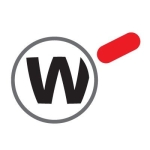Application and URL filtering is the perfect combination to block unwanted application and web browsing traffic based on the defined policy.
Customers who don't have a dedicated proxy can utilize Check Point's Next Generation Firewall as an Application Control.
It allows users to define policies based on source IP, user role, or group, which can easily identify traffic flow with SAML. You can allow or block traffic coming or going out to the internet for specific applications or websites.
Most organizations take advantage of application control, which provides the most efficient and accurate results to block or allow application traffic.
No organization requires entire access for an application running as that would cause more risk, which is not desirable. If we want to allow certain required applications, with Check Point, application control is possible.
For customers that have database servers and public-facing servers and want to provide access to specific services, Check Point is perfect.
With application control and URL filtering, it becomes possible to block/allow applications and sub-applications the maximum flexibility to allow for policy-based access roles. The solution offers user notifications for blocked access, time-defined policies, and bulk categorization of malicious applications.
With Check Point Application Control, it is possible to mitigate unwanted application traffic even it detects items, and allows traffic for specific ports which can be required to run the specific application successfully while blocking traffic from all remaining ports.
We get a Smart Event Report which clearly shows us how many applications are running under the Check Point Gateway and which applications require more security rules while revealing vulnerabilities.
Customization rules for custom applications help to define rules.
The application layer is the most usable feature Check Point provides to categorize and distribute the different sets of rules which work in a top-down lookup approach. This allows users to define policies separately within that particulate layer.
By default, an implicitly cleanup rule exists.
The product offers easy-to-install policies and makes it simple to troubleshoot application-related traffic.
The solution is integrated with an app wiki to provide a large application database.
Smart Event generates reports which are very useful in order to identify non-required applications running into the environment.
The working principle of Check Point Application Control is far different from all other vendors in the market. It basically works in parallel with security rules. Every time packet must go from policy lookup into security rules. It sometimes leads to a troubleshooting phase for which we can create application traffic.
SD-WAN functionality can be added.
Direct API integration for customized application features can be added.
Load balancer functionality for application traffic might be a better option.
There is no completely stable solution. Even if you consider a competitor solution, you will face some issues from time to time.
The scalability is based on the device throughput.
There is dedicated TAC support for the specific blade in Check Point, which provides for a better resolution.
We did a direct migration from Sophos/Cisco FTD to Check Point. This has been done for many customers and usually leads to changing application control.
The initial setup is straightforward in terms of the policy configuration and licensing.
We are the vendor. We can assist in implementations.
The setup is very straightforward and the licensing works based on a subscription model.
We did look at dedicated proxy servers.






